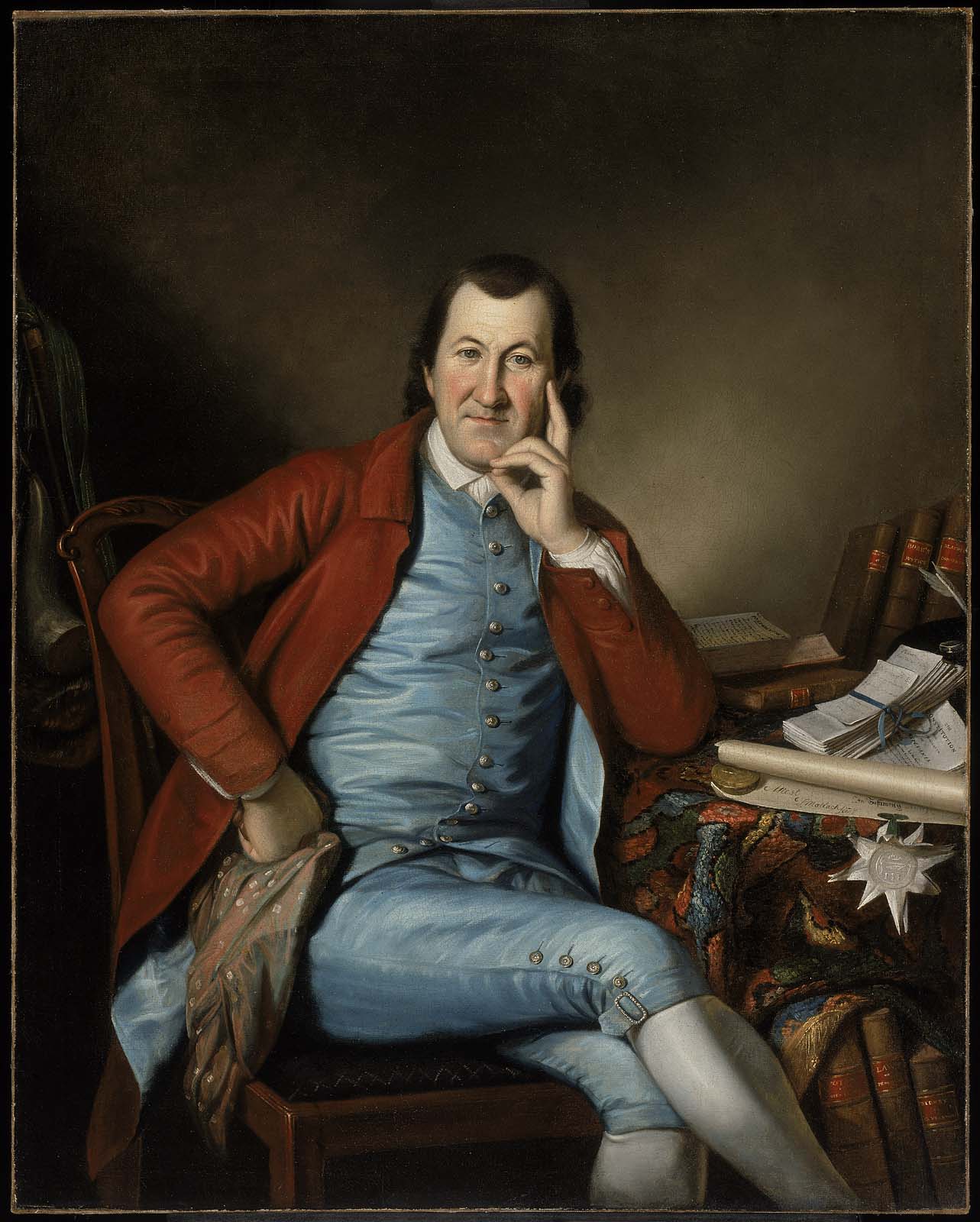Timothy Matlack

Timothy Matlack (c. March 28, 1730 – April 14, 1829) was a merchant, surveyor, architect, patriot and statesman from Lancaster and Philadelphia, Pennsylvania. A delegate from Pennsylvania to the Continental Congress in 1780, he emerged during the American Revolution as one of Pennsylvania's most provocative and influential political figures.
Biography
Timothy Matlack was born in Haddonfield, New Jersey, into a family of Quakers. In 1745, the family moved to Philadelphia, where Timothy continued his education in the Quaker Friends' School. In 1758 he married Ellen Yarnall, the daughter of a Quaker preacher. The couple would have five children (William, Mordecai, Sibyl, Catharine, Martha).
In 1765, Matlack was disowned by the Philadelphia Religious Society of Friends, or Quakers, for what some believe were his questionable lifestyle and associations with lower class people. One of the earliest opponents of slavery, Matlack felt the Quakers were not moving quickly enough on abolition.
At the outset of the American Revolutionary War, Matlack served as clerk to Charles Thomson, the Secretary of the Continental Congress. In this role, he engrossed the copy of the Declaration of Independence that was signed by the Congress and is now on display in the National Archives.
Matlack was also commissioned a Colonel in the local militia known as the Philadelphia Associators, under which he commanded a rifle battalion. His battalion campaigned in New Jersey under General John Cadwalader in the Battle of Trenton and the Battle of Princeton.
Matlack was active in the revolutionary politics of Philadelphia, serving on committees of inspection and observation, and attending the conference in June 1776 that called for a convention to draft a new state constitution. As a delegate to that convention, his radical Whig faction was instrumental in drafting the Pennsylvania Constitution of 1776 and its declaration of rights. He was an ardent defender of the Constitution against its moderate republican critics, most notably James Wilson. He served in a variety of officers thereafter, most importantly as the first Secretary to the Supreme Executive Council of the Commonwealth of Pennsylvania.
While serving as Secretary of the Supreme Executive Council, Matlack played an instrumental role in the May, 1779 court martial of General Benedict Arnold in Morristown, serving as one of the prosecution's chief witnesses during the trial. The third charge read against Arnold claimed that he imposed "menial offices on the sons of freemen of the state," a reference to an incident involving Timothy's son, William, who was allegedly called upon to fetch a barber for the General while assigned to his personal service.
In 1781, Matlack helped found along with Samuel Wetherill the Society of Free Quakers, which consisted mostly of Quakers disowned for their participation in the American cause for independence. He helped raise a substantial sum of money to construct the Free Quaker Meeting House at the corner of Fifth and Arch streets in downtown Philadelphia. He is attributed with the design of the Meeting House and and his brother Josiah Matlack was employed in its construction. He was later interred along with other Members in the Free Quaker Burial Ground on South Fifth Street.
Matlack served in a variety of government posts in Pennsylvania following the Revolution. He died in Holmesburg, Pennsylvania, and is buried in Audubon, Pennsylvania.
References
- Stackhouse, A. M. Col. Timothy Matlack, Patriot and Soldier. [N.p.]: Privately printed, 1910.
- Landis, Bertha Cochran. Col. Timothy Matlack. Papers read before the Lancaster County Historical Society, Vol. XLII-No.6; Lancaster, PA: 1938.
- Simpson, Henry. The Lives of Emminent Philadelphians Now Deceased. Philadelphia: William Brotherhead, 1859; pg. 685.
- Peterson, Charles E. Notes on The Free Quaker Meeting House. Washington D.C.: Ross & Perry Inc, 2002.
- Proceedings of a General Court Martial. New York: Privately Printed, 1865.
Further reading
- Matlack, Timothy. "An Oration, delivered March 16, 1780 : before the patron, vice-presidents and members of the American Philosophical Society, held at Philadelphia, for Promoting Useful Knowledge." Philadelphia: Styner and Cist, 1780.
External links
- United States Congress. "Timothy Matlack (id: M000246)". Biographical Directory of the United States Congress.
- Pennsylvania Historical Marker
- Biography, Timothy Matlack at the University of Pennsylvania
- Free Quaker Meeting House blueprint by Timothy Matlack, Library of Congress
- Gaspare J. Saladino. Matlack, Timothy. American National Biography Online, February 2000.
